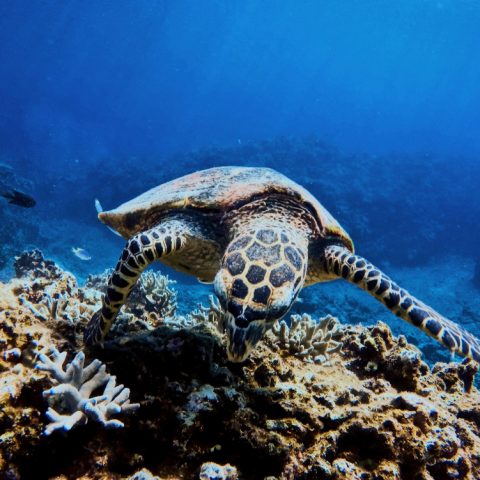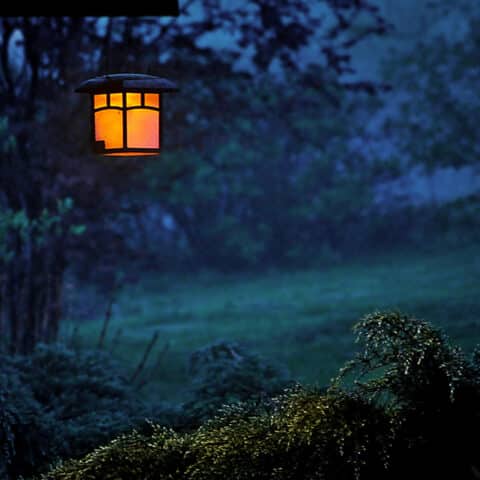
Akita is a large prefecture in the Northern Tohoku Region on the coast of the Sea of Japan, where the atmosphere shifts with each of the four seasons. Among Akita’s main attractions are its beautiful mountains, sea view, and hot springs. The region boasts an array of delectable, seasonal dishes that are simply a must-try! You can dive deeper into these culinary delights by visiting our blog post here.
If you want to know more about Akita and learn how to enjoy each season, you are in the right place!

Kakunodate-Photo Credit: Sara
Kakunodate
Explore traditional samurai architecture in the ancient district of Kakunodate, where you’ll follow long, wide roads banked by tall weeping trees, which are especially popular during cherry blossom season. Notable stops include the Aoyagi Samurai Manor, one of the best-preserved historical residences in Japan. The estate features the main house, an armory, several galleries, the Akita Folk Museum, the Samurai Tool Museum, and a beautiful garden connecting everything.
In addition to the well-maintained premises, there is a range of interactive activities that are sure to make your visit memorable. Try handling a samurai sword, wearing a helmet, or lifting a traditional Kago carriage used in the Edo period. Along the road, you can also drop by the Denshokan Museum, which exhibits traditional crafts and even allows you to witness demonstrations by master craftsmen.
Official Website: https://www.city.semboku.akita.jp/sightseeing/spot/07_buke.html
Google Maps link: Kakunodate samurai residence street
Fees:
Individuals: Adults: (high school students and older) 500 yen,
Elementary and junior high school students 300 yen
Group: Adults (high school students and older) 400 yen,
Elementary and junior high school students 200 yen
Opening times:
April – November 9:00-17:00
December – March 9:00 – 16:00

Namahage Museum-Photo Credit: Sara
Namahage Museum
Namahage is a type of Raiho-shin, a ‘visiting deity’. On the night of New Year’s Eve, young men in the Oga Peninsula wear masks, and costumes made of traditional straw capes, and hold knife-like objects to portray these demonic beings. They visit households where children live, screaming, “Is there anyone who is crying?” With their appearances and voices being so terrifying, the children who notice the Namahage often cry out and run away. This custom is unique to Akita, and the purpose of this tradition is not to scare children but to exorcise evil spirits in the home and pray for good health and a bountiful harvest. If you visit the Namahage Museum, you can see genuine Namahage and a demonstration of what you would expect on New Year’s Eve.
Official Website: https://namahage.co.jp/namahagekan/
Google Maps link: Namahage Museum
Fees: 660yen (Elementary, Junior High, and High School Students 330yen)
Groups: (15 or more) 590yen (Elementary, Junior High, and High School Students 260yen)
Opening times: 8:30 a.m. – 5:00 p.m. (open 365 days a year)

Lake Tazawa- Photo Credit: Asako, AC Photo
Lake Tazawa
Lake Tazawa, known for its crystal-clear cobalt blue waters, is the deepest lake in Japan, with one lap around its perimeters being about 20 km. There are various water activities to enjoy here, including jet-skiing, sailing, and standup paddle boarding (SUP) during the summer months. Boat tours are available during peak seasons, but you can also hike one of the many trails around the lake.
There are many campsites, hostels, and hotels, making Lake Tazawa a popular place to stay during the summer season. You can get to Lake Tazawa from Akita Station to Tazawako Station in about one hour by Shinkansen. The blue sky and lake are sure to leave you feeling refreshed.
Official Website: https://www.city.semboku.akita.jp/en/sightseeing/spot/04_tazawako.html
Google Maps link: Lake Tazawa
Fees: Free (excludes activities)
Opening times: 24 hours

Unshoji Temple-Photo Credit: Shirakami730, AC Photo
Unshoji Temple
In the Oga area, there is a temple called Unshoji, built in 1624 during the Edo period, which is famous for its hydrangeas. Hydrangeas are known as the flower of the rainy season in Japan because the best time to see them is from the middle of June to the middle of July, a period marked by frequent rainfall.
If you visit in the afternoon, you can enjoy the view of these gorgeous flowers from the temple on the beach. Moreover, the Unshoji is illuminated at night, with the contrast between the lit-up hydrangeas and the dark and silent temple being truly a sight to behold.
Official Website: https://namahage.co.jp/namahagekan/
Google Maps link: Unshoji
Fees: Daytime 500 yen
Special nighttime illumination viewing is 700 yen
Opening times: Daytime 9:00-17:00 (last admission 16:30)
Special nighttime illumination viewing 18:45-21:30 (last admission 21:00)

Kanto Festival-Photo Credit: Sara
Kanto Festival
If you visit Akita in the summer, you should not miss the Kanto Festival. The Kanto Festival is held over four days at the beginning of August and has a history dating back to 1789, with people at the time using it as a way to pray for bountiful harvests. There are two types of performers in the Kanto Festival: Sashite and Ohayashi. Sashite plays a critical role in the festival, holding poles with dozens of lanterns on their shoulders, foreheads, and lower backs. Only men are allowed to perform as Sashite, and sophisticated balancing techniques are needed to achieve this amazing feat. Ohayashi, on the other hand, plays Japanese flutes and drums to make the Sashite performance more lively and fun. The lanterns lit up in the night sky with beautiful music are an amazing sight to see.
Official Website: https://www.kantou.gr.jp/
Google Maps link: Sanno-Odori
Fees: Free
Opening times: August 3 – August 6, 18:15 – 21:30

Oyasukyo-Photo Credit: Sara
Oyasukyo
An incredible trail leads you through the ancient gorge Oyasukyo, where 98-degree hot spring waters gush out of the crevices in the cliff face, shrouding the area in steam. These same waters feed the Oyasukyo Onsen spring bath, where you can relax and enjoy the beautiful foliage that surrounds the area in the fall. There are plenty of facilities nearby that cater to tourists, both overnight and day-trippers.
Official Website: https://www.city-yuzawa.jp/site/yuzawatrip/736.html
Google Maps link: Oyasukyo
Fees: Free
Opening times: 24 hours

Nyuto Onsenkyo-Photo Credit: Sara
A famous hot spring in Nyuto Onsenkyo
Nyuto Onsenkyo is the collective name of the seven hot springs located at the foot of Mount Nyuto in Towada and Hachimantai National Parks. These seven inns each have unique hot springs (onsen) where you can enjoy different kinds of hot waters, including milky white waters. All hot springs have the option to visit just for a soak or to stay overnight to enjoy the springs more leisurely, and some inns even have a free private open-air bath!
Official Website: http://www.nyuto-onsenkyo.com/
Google Maps link: Tsurunoyu Onsen
Fees: 700 yen – 1000 yen (The price depends on the type of Onsen)
Opening times: 9:00-17:00

Akita Inu-Photo Credit: Sorairo, AC Photo
Akita has many fascinating sightseeing spots that you will no doubt want to visit again, such as Lake Tazawa and other fantastic natural locales, along with famous hot spring resorts like Nyuto Onsen. There are also plenty of wonderful cultural experiences from festivals to museums that allow you to immerse yourself in the prefecture’s history. When you visit Akita, be sure to take a trip to some of the places introduced in this article!
Interested in visiting Akita but not sure how? Book a Personal Travel Consulting Call with our experts and make sure to mention it!
PIN THIS FOR LATER




